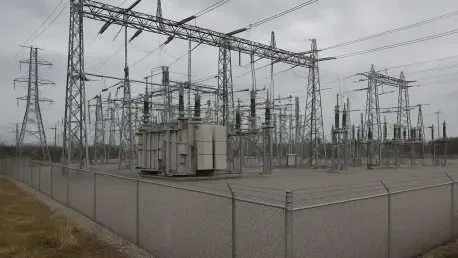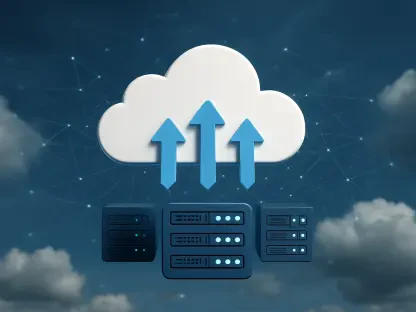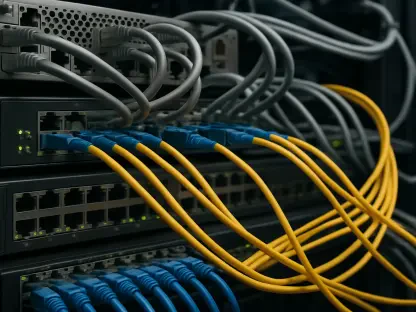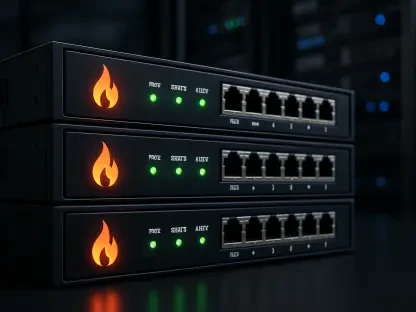As the digital economy surges forward with an insatiable appetite for cloud computing and artificial intelligence applications, data centers across North America are grappling with unprecedented demand that is pushing infrastructure to its limits. Vacancy rates have dropped to an alarming 2.3%, according to recent industry reports, signaling a severe shortage of available capacity. This crunch is compounded by significant grid power challenges, with connection delays stretching up to four years for new facilities. Such bottlenecks threaten to stall the growth of critical digital infrastructure at a time when reliability and speed are paramount. The strain on the power grid raises urgent questions about how the industry can sustain its momentum. Operators and stakeholders are now forced to explore innovative strategies and alternative solutions to bridge the gap between soaring demand and constrained supply, setting the stage for a transformative period in the sector.
Navigating Record-Breaking Demand and Supply Shortages
The data center industry is experiencing a historic boom, driven by the exponential growth of digital services that underpin modern life, from streaming platforms to complex AI algorithms. Industry insights reveal that 73% of new construction projects are pre-leased before completion, a clear indicator of the acute supply shortage gripping the market. This intense competition for space is reshaping operational priorities, as companies scramble to secure capacity in a landscape where waiting for new builds is often not an option. The pressure is particularly evident in core markets like Northern Virginia, which alone accounts for a significant share of the region’s power consumption. As demand continues to outstrip supply, the industry faces a critical juncture where short-term fixes and long-term planning must align to prevent disruptions to the digital economy that relies so heavily on these facilities.
Beyond the numbers, the implications of this supply crunch are far-reaching, affecting not just data center operators but also the broader ecosystem of businesses dependent on seamless connectivity. The challenge lies in balancing rapid expansion with the realities of limited resources, as every new facility requires substantial energy to operate at full capacity. With vacancy rates at historic lows, many tenants are forced to consider alternative arrangements, such as partnering with cloud providers for temporary capacity or investing in custom-built solutions despite higher costs. Meanwhile, the risk of overbuilding looms, though current grid limitations may inadvertently act as a safeguard against speculative bubbles. This dynamic underscores the urgent need for strategic interventions that can address immediate needs while laying the groundwork for sustainable growth in an increasingly digital world.
Tackling Grid Connection Delays With Innovative Power Solutions
One of the most pressing obstacles for data center development is the lengthy wait for grid connections, often averaging four years, which stalls projects and delays critical capacity additions. To circumvent these delays, industry experts advocate for behind-the-meter power solutions, such as natural gas turbines, which can be deployed in months rather than years. These alternatives provide a quicker path to energy access, albeit with trade-offs in cost and environmental impact. Additionally, powered-land sites, already equipped with necessary infrastructure, offer a faster route to construction, though they come at a premium. Such strategies are becoming essential stopgaps as the industry seeks to keep pace with unrelenting demand, ensuring that new facilities can come online without being hindered by systemic grid constraints.
Another avenue gaining traction is the retrofitting of existing data centers with unused or stranded power capacity, a practical workaround to maximize current resources. This approach allows operators to tap into latent potential within their facilities, providing immediate relief without the need for extensive new builds. For tenants, exploring self-built facilities or leveraging cloud providers offers flexibility, though these options often require significant investment. While these short-term measures help alleviate pressure, they also highlight the broader challenge of aligning energy infrastructure with the rapid evolution of digital needs. As the sector navigates these hurdles, the focus remains on optimizing existing assets while pushing for innovations that can address the root causes of power delays, ensuring that growth does not come at the expense of reliability or efficiency.
Market Dynamics and Geographic Shifts in Response to Power Costs
The North American data center market is undergoing a profound transformation, characterized by a staggering 7.8 gigawatts of construction underway and an additional 31.6 gigawatts in planning stages. Rising commercial electricity costs, which have surged by 30% over recent years, are driving 75% of new developments toward low-cost power markets. This cost-driven decision-making is reshaping site selection, with operators prioritizing regions where energy expenses can be minimized without compromising on connectivity or infrastructure. Core hubs like Northern Virginia continue to dominate, but their expansion into adjacent areas signals a broader trend of geographic diversification aimed at balancing cost and capacity needs in a highly competitive landscape.
Simultaneously, emerging markets are gaining prominence as hyperscalers—large-scale cloud service providers—venture into new territories, often to support AI training workloads. These frontier regions are expected to mature over time, with colocation facilities likely to follow suit, creating a ripple effect of growth. Established markets are also extending their reach, as seen in Chicago’s push into Northwest Indiana and Dallas’s expansion into West Texas. This dual movement of reinforcing core areas while pioneering new hubs reflects the industry’s adaptability to power constraints and demand pressures. Investor confidence remains strong, with debt markets for data center assets reaching $13.4 billion in recent activity, underscoring a belief in the sector’s long-term potential despite current challenges. This financial backing is poised to fuel further development in both traditional and emerging locales.
Envisioning Long-Term Energy Solutions for Sustainable Growth
Looking ahead, the data center industry is exploring transformative energy solutions to address long-term capacity needs beyond temporary fixes. While options like fuel cells and hydrogen are under consideration, their impact remains limited in the near term due to scalability and cost challenges. However, nuclear-powered small modular reactors are emerging as a promising frontier, with commercial deployments anticipated closer to the end of the decade. These reactors could redefine how data centers source power, offering a sustainable and reliable alternative to traditional grid dependency. As such technologies mature, they hold the potential to alleviate the chronic power shortages that currently hinder expansion, paving the way for a more resilient digital infrastructure.
In parallel, the focus on sustainability is prompting operators to rethink energy consumption patterns and integrate renewable sources wherever feasible, despite the immediate hurdles. The projected $1 trillion in data center development over the coming years, fueled by robust investor demand, suggests that financial resources will be available to support these innovations. The challenge lies in accelerating the adoption of such solutions while maintaining operational continuity for existing facilities. Collaboration between industry stakeholders, policymakers, and energy providers will be crucial to streamline grid access and incentivize cutting-edge power technologies. As these efforts unfold, the sector stands at the cusp of a paradigm shift, where energy innovation could become the cornerstone of sustained growth in an era defined by digital transformation.
Reflecting on Past Strides and Future Pathways
Reflecting on recent years, the data center industry has tackled immense grid power challenges with a blend of ingenuity and pragmatism, adapting to unprecedented demand through short-term power solutions and strategic geographic shifts. Operators have leaned on behind-the-meter options and retrofitted facilities to bypass grid delays, while market dynamics have steered growth toward cost-effective regions. Looking forward, the path involves accelerating the deployment of sustainable energy alternatives like small modular reactors and fostering partnerships to enhance grid infrastructure. Prioritizing research into scalable power solutions and advocating for policy reforms to expedite connections will be vital steps. As the digital economy continues to expand, ensuring a stable energy foundation remains paramount, and the lessons learned from past constraints should guide the industry toward a more robust and adaptable future.









